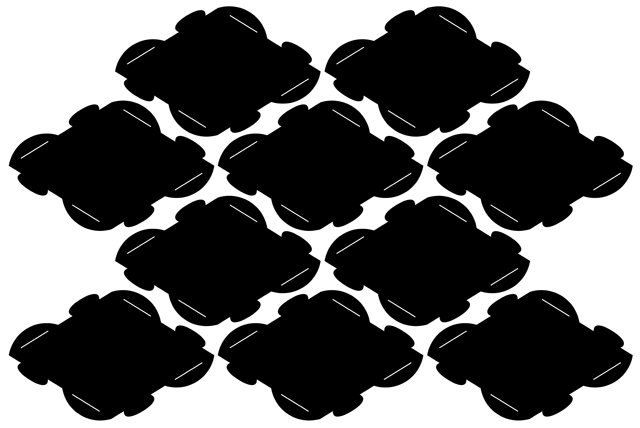Assignment 2: How to Make a Rhombic Triacontahedron Using the Vinyl Cutter
I was really excited to test out the vinyl cutter this week. I have used the laser cutter so many times in the past that I wanted to try to create a press-fit constuction kit using just the vinyl cutter. In this case, I chose to make a Rhombic Tricontrahedron, aka R30, which is basically just a convex polyhedra (in this case a sphere) made from 30 rhombic (diamond) faces. I chose to use Duralar, a 0.01" thick colored plastic sheet which has enough flexability and stiffness to make a perfect slot and tab construction system. Before I start, I should mention that the tab system shown below was heavily influenced by the work of Chris Palmer and his work on origami pattern folding.
Let's start by looking at the geometry of the rhombic face. The information below is pretty much straight from MathWorld. From these equations, it's quite easy to put together a parametric definition of the rhombic face, complete with all of the necessary slots and tabs. The Grasshopper file I created can be downloaded here (Note: this file was create with Grasshopper version 0.7.0055).
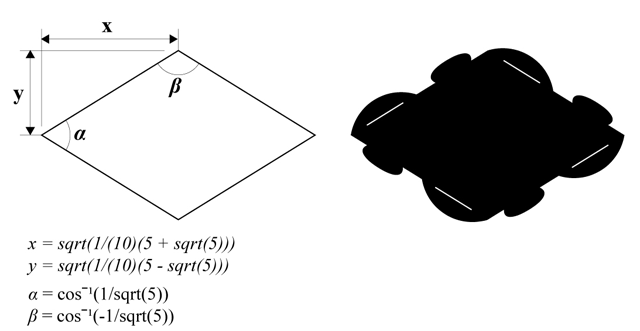
I used the MAS Fab modules provided by Neil to send the information directly to the Roland Vinyl Cutter because there were still issues sending any sort of vector information to the cutter. It turns out that it's actually quite easy to do once you get the hang of sending stuff from the command prompt. There were still issues with this process, such as not being able to control the speed of the cutter (it always used the default setup on the machine). But overall, it was a fairly fluid process. In order to use the modules, I needed to convert my Grasshopper profile into a .png file which could be converted into the cutting paths. Below is the final layout file that I used. (Note: Click on the image to open the high-res image that can be sent directly to the Roland cutter. You'll also want to make sure you cut out 30 pieces to assemble the entire polyhedra).
Now that we've gotten all of the pieces cut out, let's start the assembly process. We'll start by connecting two of the rhombic faces together. It doesn't necessarily which edge you start with (it's symmetrical). You'll want to interlock the tabs into the slits. Each tab is slightly larger than the slit opening so it should fit snuggly, but you shouldn't have to force it.
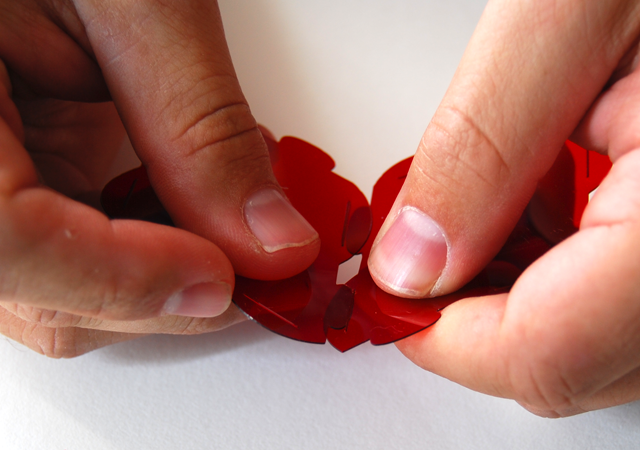
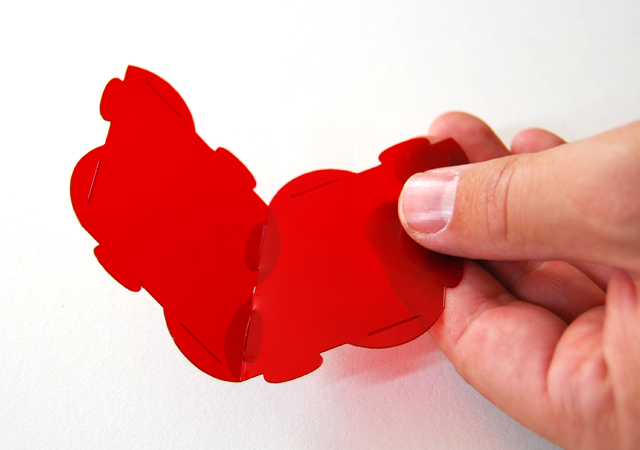
Now add a third face. Once you get the hang of adding the pieces, you'll notice that the geometry of the R30 occurs in groups of three or groups of five. Groups of three will always be connected at the obtuse angle, while groups of five will be connected at the acute angle. Again, this will probably make more sense the farther you get in the assembly process. For now, add the third face so that the new face is connected at the obtuse angle.
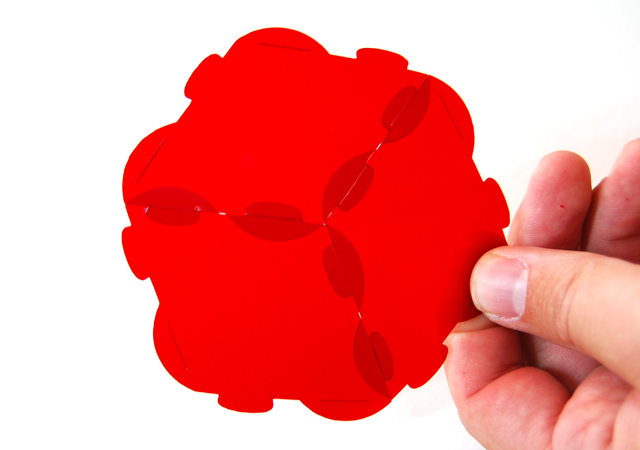
Now start building the group of five off of any of the acute angle corners (see image below). It doesn't really matter which corner you start with since we'll be working our way along each of these corners through out the process.
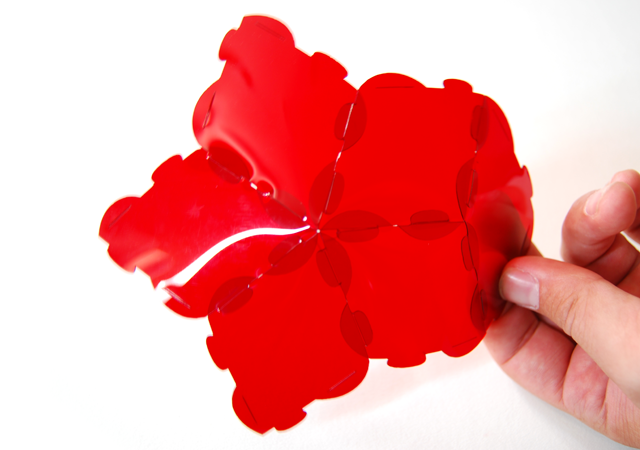
Keep working your way around, adding more faces... keeping sure to make groups of five (like the image above) near the acutate angle on the face and groups of three near the obtuse angle.
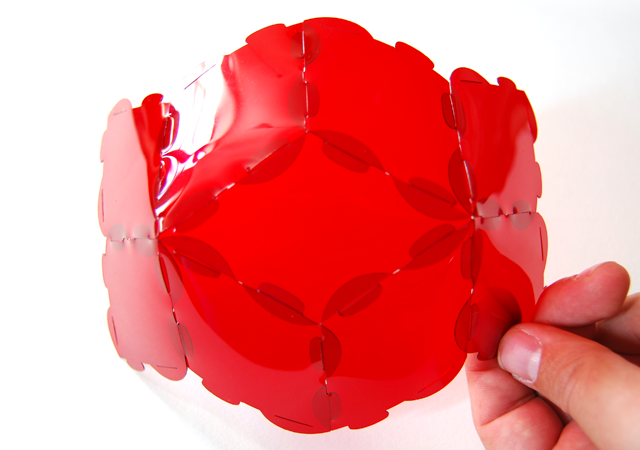
At this point, you should be close to half way done with assembling your R30 polyhedra. Hopefully, yours will look similar to the image below.
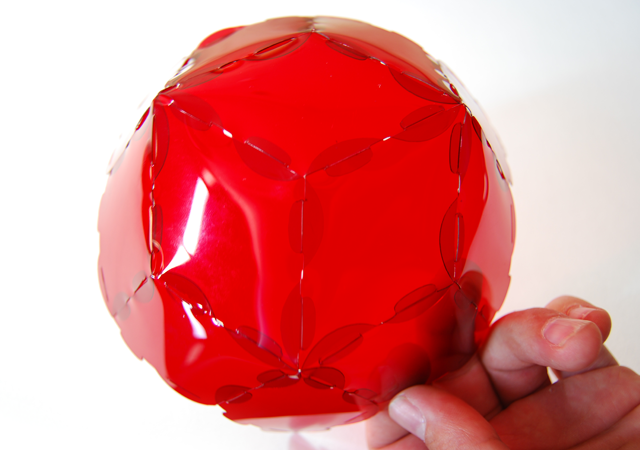
Keep going, working your way around until you close the final hole in the polyhedra. You'll notice that the more faces you add, the stiffer (or structural) your piece becomes. You'll also probably notice that the last one or two faces become particularly tricky to connect because you can't get inside the piece to add pressure. With a little practice thought, all of the pieces should snap together quite nicely and you have an entirely closed rhombic tricontrahedra.
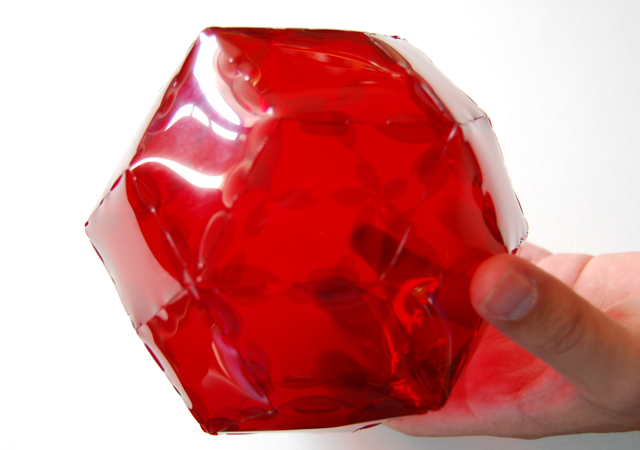
Some thoughts for future excercises:
- Try changing the color patterns for each face. You could choose to use color to identify the groups of three and groups of five. Or choose your own custom color scheme
- How would changing the material affect the tab/slot connection? Since the R30 profile is completely parametric, which Grasshopper parameters would you need to change to account for different material thicknesses.
- What other polyhedra could you make with this technique? You may begin by looking into other Zonohedra (the rhombic tricontrahedra falls into this family) or perhaps you could look into Catalan Solids (also known as Archimedean duals).
